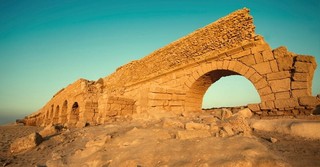What Happened at Babel?
Share

Genesis 11:1–9 is a literary masterpiece, but unless you are familiar with ancient compositional techniques, you might not know why.
The chiasmus—named after the Greek letter chi, which looks like the English X—is just one of the techniques at work in this passage. It is formed by parallel lines that make half of an X pattern. Genesis 11:1–9 makes a chiasmus.
On the surface, the Tower of Babel story seems like a power struggle between God and humanity. Did God intervene because He was envious of their technological advancements? Is God the cosmic killjoy? You might take it that way, but only if you read the story apart from its literary and cultural context.
The details about migration and settlement (11:2) are no small matter. Earlier in Genesis, God judged humanity by expelling them eastward from the land. He expelled Adam and Eve in that direction (3:24), and Cain, too (4:16). But here the people are moving back west (from the east), reversing the judgment (11:2). Their settlement in the valley also reverses another divine action: God’s command to fill the earth, which He gave to Adam and Eve (1:28), and to Noah (9:1). But this is only the beginning.
The structure they were building was more than just a tower. Scholars believe it was a ziggurat, a construction that was “used for worship” and was “similar in profile to the step pyramid of Egypt” (Baker Encyclopedia of the Bible, pg. 2198). Ancients believed that deities dwelt on high places, and so worship should take place on hills and mountains where they could be closer to the gods. Since these people were in a valley or plain, they built the ziggurat as a substitute for a mountain. So either the people wanted to manipulate God to come down for worship, or they wanted to ascend the structure to become like God. (Remember, they wanted to make a name for themselves.) Ironically, God does come down (11:5). But He comes down to mix up their language because they mixed up His created order (11:7–9).
Putting this story in context shows that God is not a cosmic killjoy—jealous of the accomplishments of humanity. Rather, He is the loving Creator-King who commands love and loyalty from His subjects. Yes, He judges. But He also redeems.
The next chapter in Genesis and the book of Revelation testify to the divine redemption that began at Babel. The very things humanity tried to take by force God gave to Abram as a gift: a great name, nationhood and land (Gen 12:1–3). In doing so, God did not abandon the other nations. Instead, He called Abram from the east to the land of Canaan so that He could bless the nations. Looking forward, God invites all tribes, nations, and languages to come and worship Him (Rev 5:9; 14:6). He leads them not into a garden, but into His city—the New Jerusalem—where He Himself is the temple (Rev 21:9–27).
This structure is adapted from J. P. Fokkelman’s analysis of Genesis 11:1–9 in his book Narrative Art in Genesis.
Sources:
Walter A. Elwell and Barry J. Beitzel, Baker Encyclopedia of the Bible (Grand Rapids: Baker Book House, 1988). Logos.com/BakerEncyclopedia
J.P. Fokkelman, Narrative Art in Genesis: Specimens of Stylistic and Structural Analysis (2nd ed.; Sheffield: Sheffield Academic Press, 1991).
Get resources on Genesis at Logos.com/Genesis